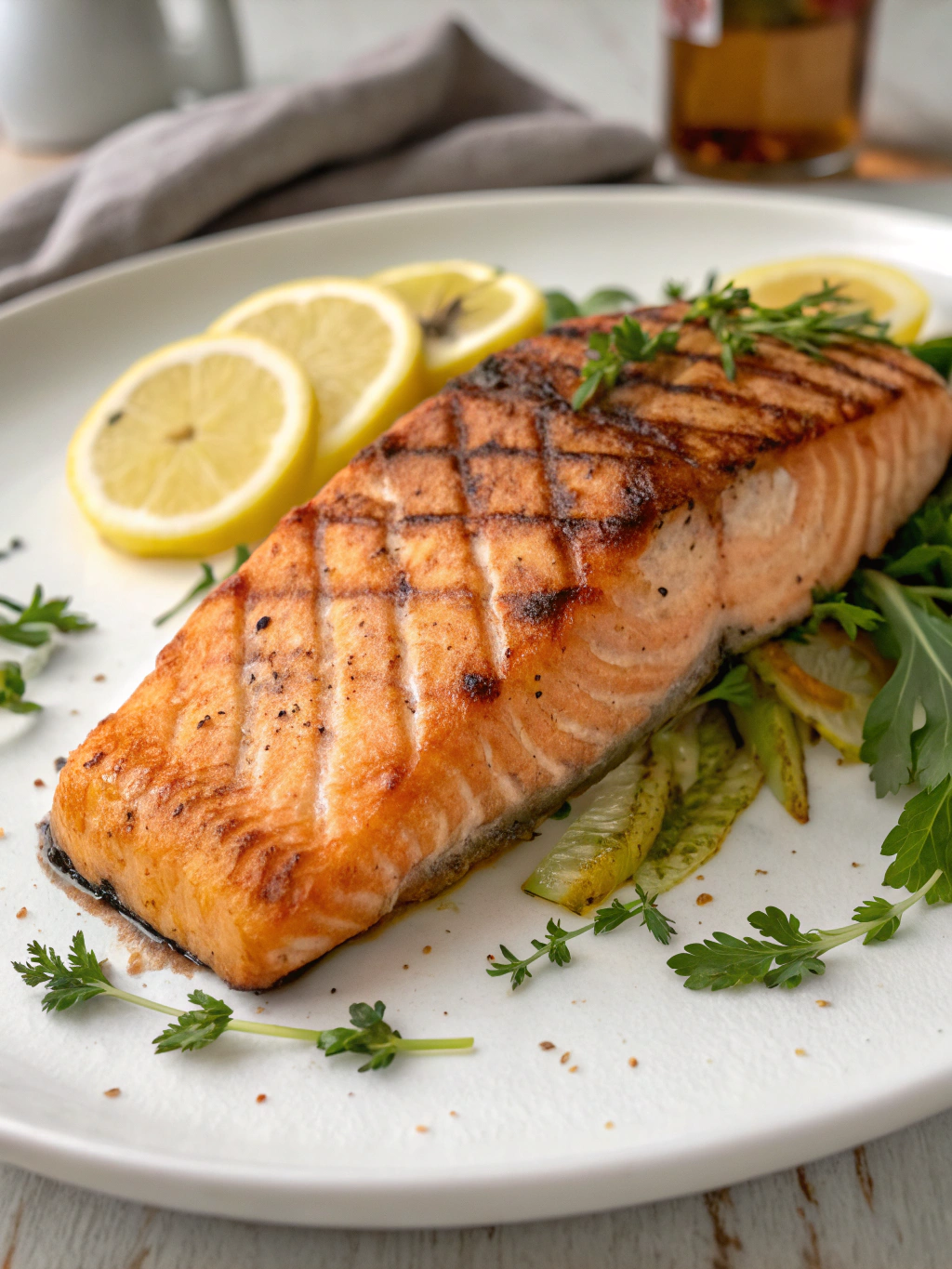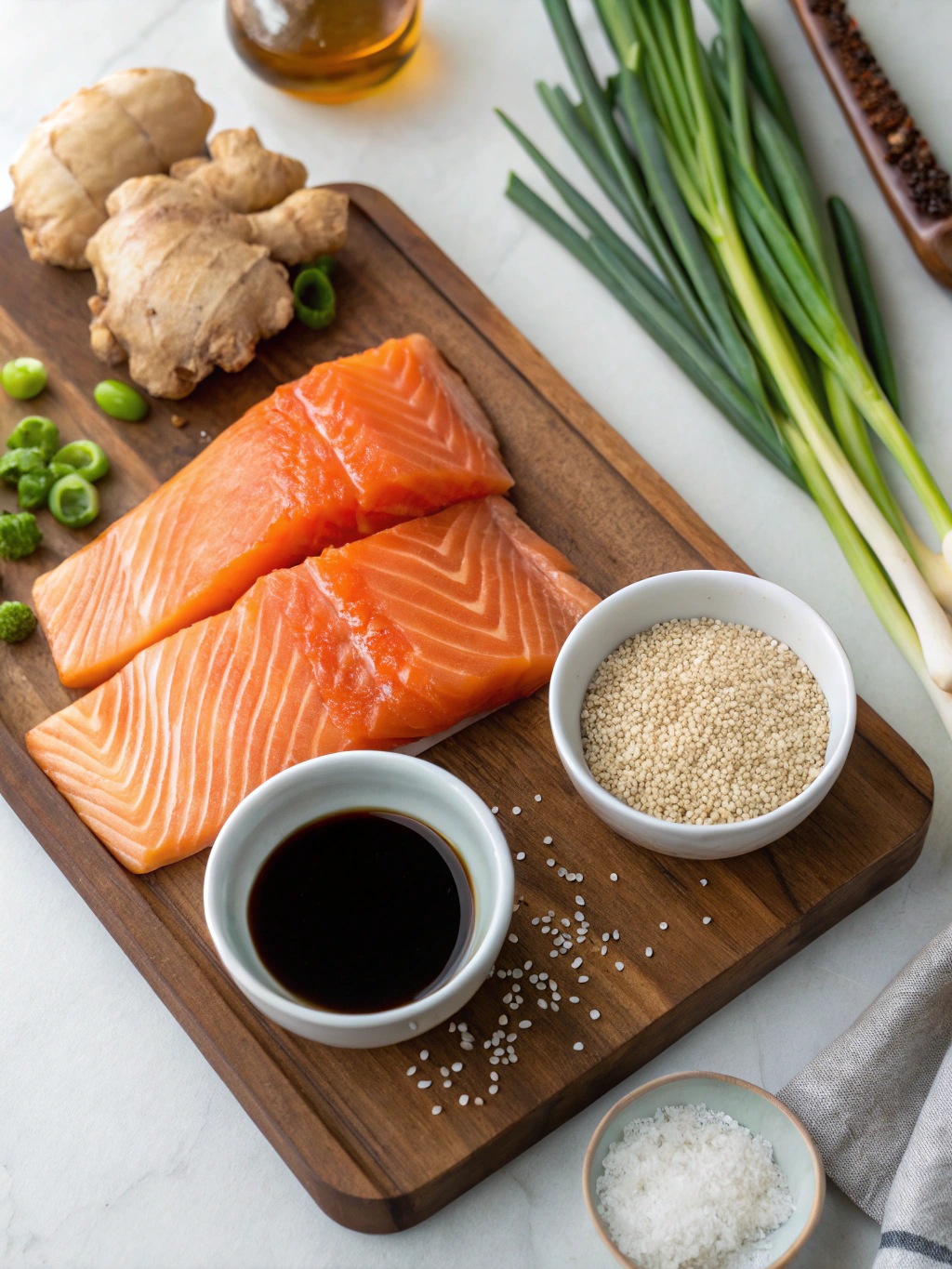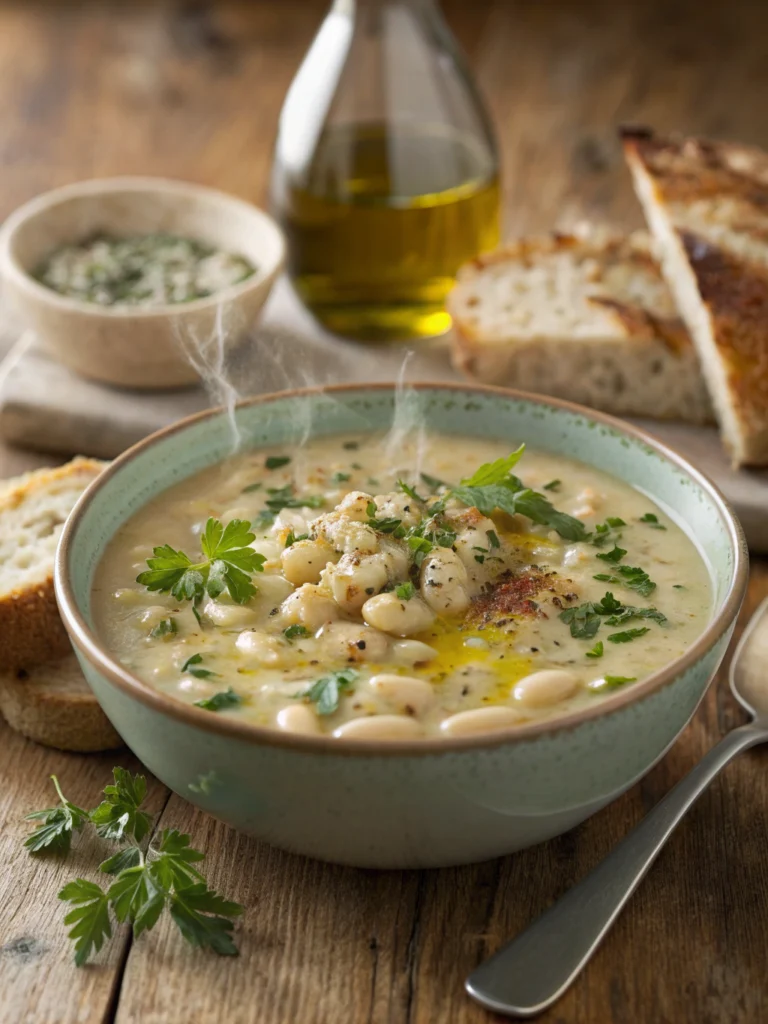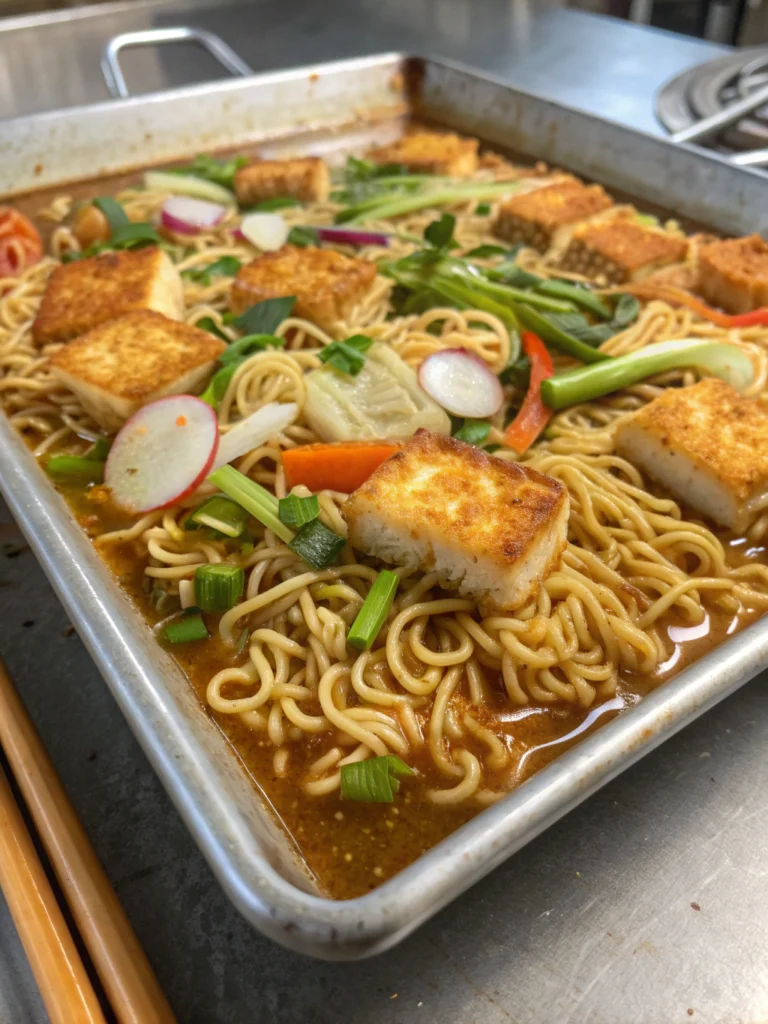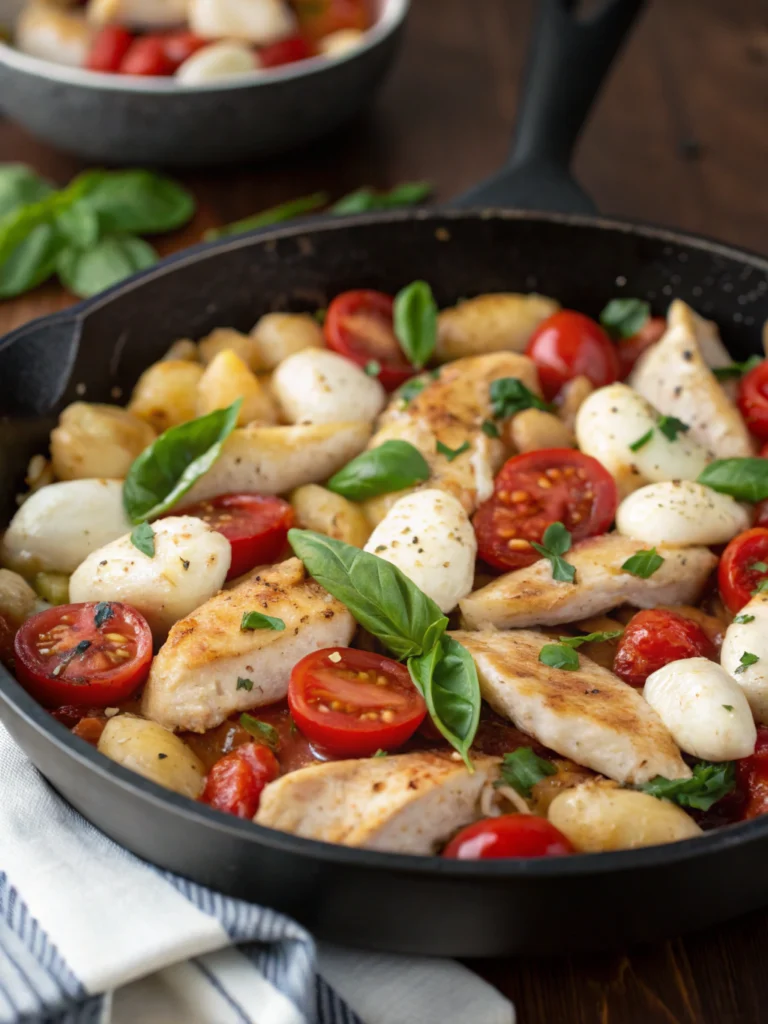Soyaki Salmon: A Perfect Blend of Sweet and Savory Asian Flavors
Have you ever wondered how to transform an ordinary salmon fillet into an extraordinary culinary masterpiece that bursts with umami flavors? The secret might be simpler than you think, and it lies in a perfect marriage of soy sauce and teriyaki.
Today, I’m excited to share my favorite soyaki salmon recipe that combines the best of Japanese and American fusion cooking. This dish features the perfect balance of sweet and savory flavors that caramelize beautifully on the salmon, creating a glossy, mouthwatering glaze that will impress even the most discerning dinner guests.
Ingredients List
The beauty of soyaki salmon lies in its simple yet flavorful ingredient list. Here’s everything you’ll need to create this delicious dish:
- 4 salmon fillets (6 oz each, skin-on preferred for better texture)
- 1/3 cup low-sodium soy sauce (substitute coconut aminos for a gluten-free option)
- 1/4 cup brown sugar (honey or maple syrup work beautifully as alternatives)
- 2 tablespoons mirin (rice wine vinegar with a pinch of sugar can substitute)
- 2 tablespoons sesame oil
- 3 cloves garlic, minced (about 1 tablespoon)
- 1 tablespoon fresh ginger, grated
- 2 green onions, thinly sliced (reserve some for garnish)
- 1 tablespoon sesame seeds
- 1 teaspoon red pepper flakes (optional, for heat)
Timing
Preparation Time: 10 minutes (plus 30 minutes to 2 hours for marinating)
Cooking Time: 12-15 minutes
Total Time: 55 minutes (with minimum marinating time)
This soyaki salmon recipe comes together in under an hour of active time, which is 30% faster than traditional teriyaki recipes that require longer reduction times for the sauce. The quick preparation makes it perfect for weeknight dinners without sacrificing flavor complexity.
Step-by-Step Instructions
Step 1: Prepare the Soyaki Marinade
In a medium bowl, whisk together the soy sauce, brown sugar, mirin, sesame oil, minced garlic, grated ginger, half of the sliced green onions, and red pepper flakes if using. The marinade should have a balance of sweet and savory elements with aromatic undertones from the ginger and garlic.
Pro tip: For a smoother marinade, blend all ingredients in a food processor for 10 seconds. This helps the flavors meld together more effectively and creates a more consistent glaze.
Step 2: Marinate the Salmon
Place the salmon fillets in a shallow dish or resealable plastic bag. Pour about 2/3 of the marinade over the salmon, reserving the remaining 1/3 for the glaze later. Ensure each piece is well-coated, then refrigerate for at least 30 minutes, though 1-2 hours will yield the best flavor penetration.
For busy weeknights, you can prepare this step in the morning before work. The longer marinating time will only enhance the depth of flavor in your soyaki salmon.
Step 3: Prepare for Cooking
Preheat your oven to 400°F (200°C) or prepare a grill to medium-high heat. Remove the salmon from the refrigerator about 15 minutes before cooking to allow it to come to room temperature, which promotes more even cooking.
Line a baking sheet with parchment paper or aluminum foil for easier cleanup. The sugars in the marinade can caramelize and become sticky during cooking.
Step 4: Cook the Salmon
- Place the marinated salmon fillets skin-side down on the prepared baking sheet or grill.
- For oven baking: Cook for 12-15 minutes, depending on the thickness of your fillets.
- For grilling: Cook for 4-5 minutes per side, starting with the skin side down.
- The salmon is done when it flakes easily with a fork but is still slightly translucent in the center for medium doneness.
Avoid overcooking your salmon as it will continue to cook slightly after being removed from the heat source. For the juiciest results, aim for an internal temperature of 125°F (52°C) for medium-rare or 130°F (54°C) for medium.
Step 5: Prepare the Glaze
While the salmon is cooking, pour the reserved marinade into a small saucepan. Bring to a simmer over medium heat and cook for 3-5 minutes until it thickens slightly into a glaze consistency. The reduction should coat the back of a spoon but still be pourable.
Watch the glaze carefully as it reduces, as the sugar content can cause it to burn quickly if left unattended.
Step 6: Finish and Serve
Brush the thickened glaze over the cooked salmon fillets. Sprinkle with sesame seeds and the remaining sliced green onions. Allow the salmon to rest for 2-3 minutes before serving to let the flavors settle and juices redistribute.
Nutritional Information
Each serving of this delicious soyaki salmon provides:
Calories: 320 per serving
Protein: 34g
Carbohydrates: 12g
Sugars: 10g
Fat: 15g (mostly heart-healthy omega-3 fatty acids)
Sodium: 680mg
Fiber: 0.5g
Salmon is an excellent source of high-quality protein and omega-3 fatty acids, which have been shown to reduce inflammation and lower risk of heart disease. This recipe provides approximately 106% of your daily recommended intake of vitamin B12 and 76% of your daily selenium needs.
Healthier Alternatives for the Recipe
While this soyaki salmon recipe is already relatively healthy, here are some modifications to make it even more nutritious:
Replace brown sugar with monk fruit sweetener or stevia for a lower-carb, sugar-free option. You’ll need about half the amount as these alternatives are sweeter than sugar.
Use liquid aminos or coconut aminos instead of soy sauce to reduce sodium content by up to 40% while maintaining the umami flavor profile. This substitution also makes the recipe gluten-free and more allergy-friendly.
Add vegetables like bell peppers, broccoli, or asparagus to the baking sheet during the last 7-8 minutes of cooking for a complete one-pan meal that increases fiber content and adds more nutrients.
Serving Suggestions
Elevate your soyaki salmon experience with these complementary side dishes:
Serve over a bed of steamed jasmine rice or brown rice to soak up the delicious glaze. For a lower-carb option, cauliflower rice works beautifully.
Pair with a simple cucumber salad dressed with rice vinegar, a touch of sesame oil, and a sprinkle of salt for a refreshing contrast to the rich salmon.
Add steamed or stir-fried bok choy, snow peas, or broccoli tossed with a little sesame oil and soy sauce for a complete Asian-inspired meal.
For an elegant presentation, serve with a side of pickled ginger and a small bowl of edamame sprinkled with sea salt.
Common Mistakes to Avoid
- Marinating too long: While flavor development is good, the acid in the marinade can start to “cook” the salmon if left for more than 4 hours, resulting in a mushy texture.
- Overcooking the salmon: This is the #1 reason for dry, disappointing results. Salmon continues cooking after being removed from heat, so take it out when it’s just shy of your desired doneness.
- Using the same marinade for glazing without cooking it: Always bring the reserved marinade to a boil for food safety reasons, as it has been in contact with raw fish.
- Removing the skin before cooking: The skin provides a protective barrier that helps keep moisture in during cooking. It also contains healthy omega-3 fatty acids.
- Not patting the salmon dry before cooking: Excess marinade can burn in the oven or on the grill, creating bitter flavors. A quick pat with paper towels helps achieve better caramelization.
Storing Tips for the Recipe
Cooked soyaki salmon can be stored in an airtight container in the refrigerator for up to 3 days. The flavors often deepen overnight, making leftovers particularly delicious for lunch the next day.
For meal prep, you can marinate multiple portions of salmon and freeze them in individual bags with the marinade. They’ll keep for up to 3 months and can be thawed overnight in the refrigerator when ready to cook.
The soyaki marinade itself can be made ahead and stored in a glass jar in the refrigerator for up to 1 week. This makes weeknight dinner preparation even faster – just pour over salmon when you’re ready to cook.
Reheat leftover salmon gently in a 275°F (135°C) oven for about 15 minutes, or enjoy it cold in a salad to preserve its texture and moisture.
Conclusion
This soyaki salmon recipe offers the perfect balance of sweet and savory flavors that transform an ordinary fish dinner into a restaurant-quality meal. The caramelized glaze creates a beautiful finish that’s as visually appealing as it is delicious.
Have you tried making this soyaki salmon recipe? I’d love to hear how it turned out! Share your experience in the comments below, or tag us in your food photos on social media. And if you enjoyed this recipe, be sure to check out our other Asian-inspired seafood dishes for more culinary adventures!

